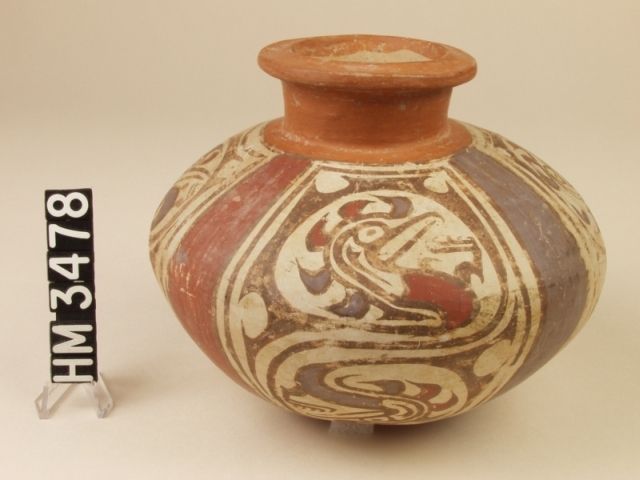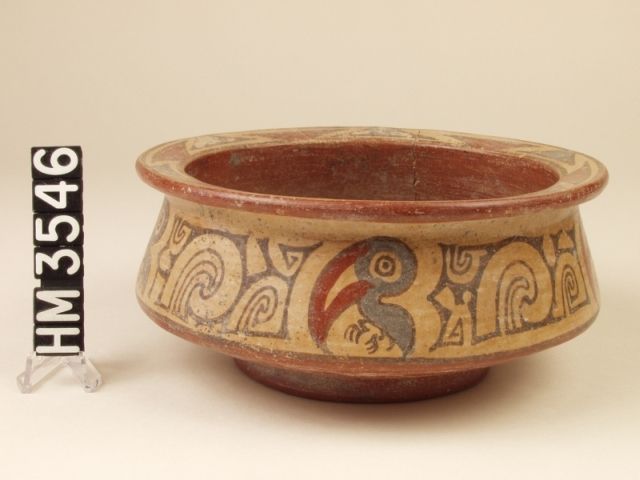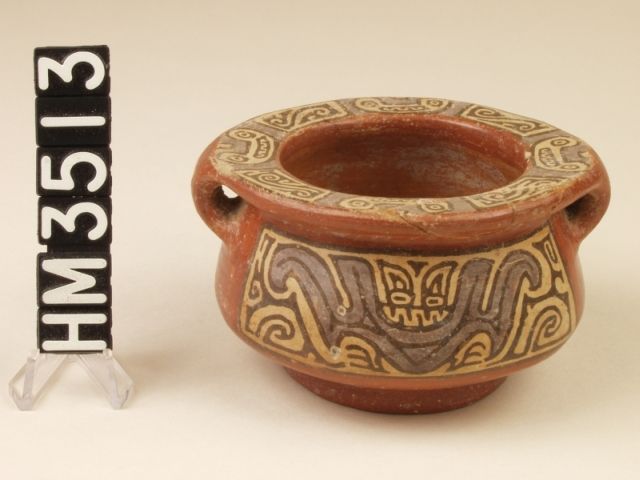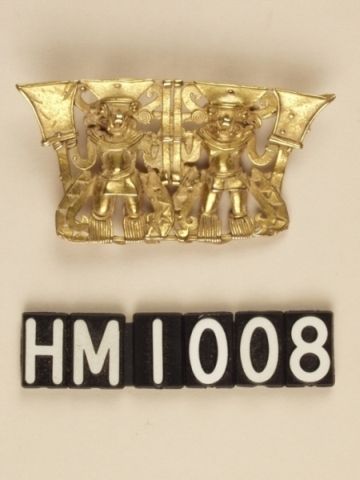Birds & Bats
Several types of birds can be identified in Panamanian polychrome designs. One category depicts various cracids, most notably the great curassow. The great curassow is a large-bodied, turkey-like bird with a curly headcrest, both arboreal and terrestrial in its habits and a slow and awkward flyer. Females are distinguished by distinctive bars or bands on the underside of the tail. Curassows also have a particular habit of turning the head back over the shoulder and wings in a kind of false preening gesture.
Curassows can be identified in Panamanian ceramic design by depiction of the barred tail, and a prominent, sometimes curly headcrest. Sometimes the body of the curassow contains boa kennings, and sometimes the headcrest and/or the tail of the curassow are depicted in the curious form of a severed human limb. In Tropical American lore severed limbs may be associated with themes of banding, curling and coiling, including hurricanes, whirlwinds, and waterspouts that “walk” across the landscape, as well as with the form of the serpent and the crest of the curassow. The curassow and severed human legs are directly associated in myth from Amazonia in which children, wishing to cross a river decide to transform themselves into birds and fly across. The last child changes into a slow-flying curassow and falls into the river, where a caiman bites off both its legs.
Other birds found in Panamanian ceramic designs include the tinamou or a type of heron typically shown laying an egg, the quetzal recognizable in part by its extremely long tail, parrots or macaws identifiable by their short, curved beaks, and heavy-billed toucans. The tinamou and its eggs, which are beautifully colored, are accorded symbolic significance by a number of Tropical American groups. In Talamancan lore, parrots or macaws nested, like other birds, high in the branches of the immense primordial Tree of Life that connected the earth with the sky before it was felled and released the waters of the sea, at which time the nests of parrots and macaws became turtles. Toucans may have been of interest to ancient Panamanians in cosmological terms because of their multicolored beaks.
Another bird-like creature found in Panamanian art, the bat, is widely found in Tropical American lore in association with creation times. In Talamancan belief the bat is one of the most primordial creatures and served an essential creative function. At the beginning of the World, when the earth was only hard rock, the creator found a bat hanging from the rock. From the droppings of the bat came the fertile soil that covered the base rock and allowed plants to root and, thus, people to live.
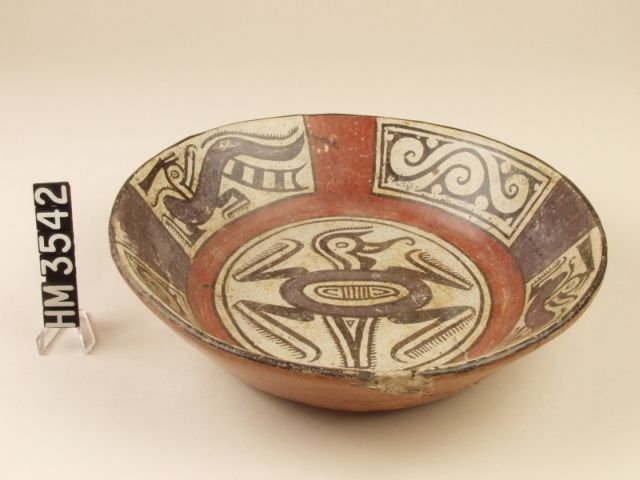
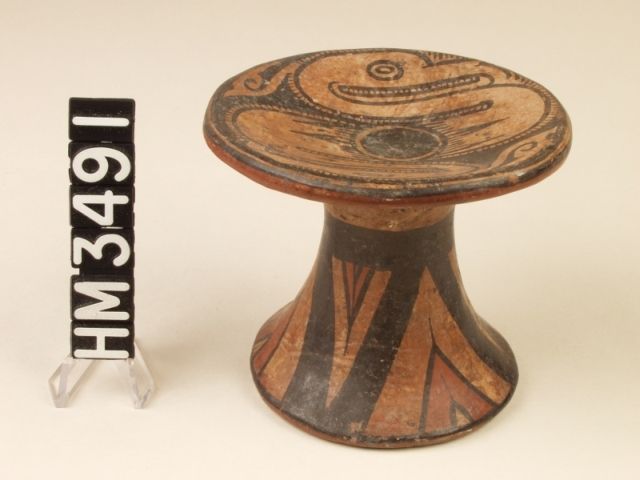
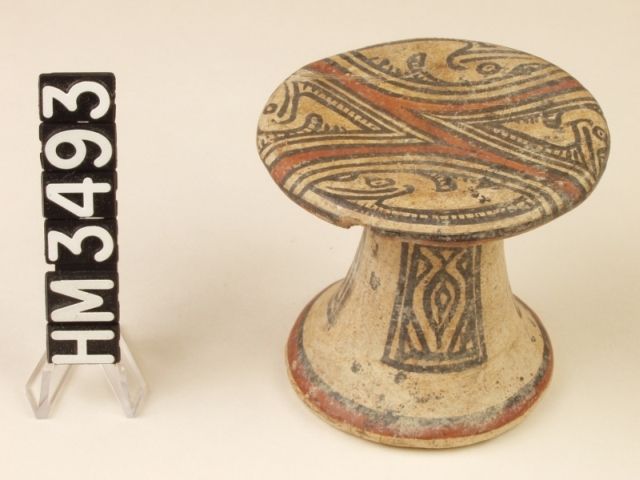
Polychrome Ceramic Pedestal Plate
A.D. 800 – 1000
Macaracas (Late Coclé) Period
Pica Pica Variety
